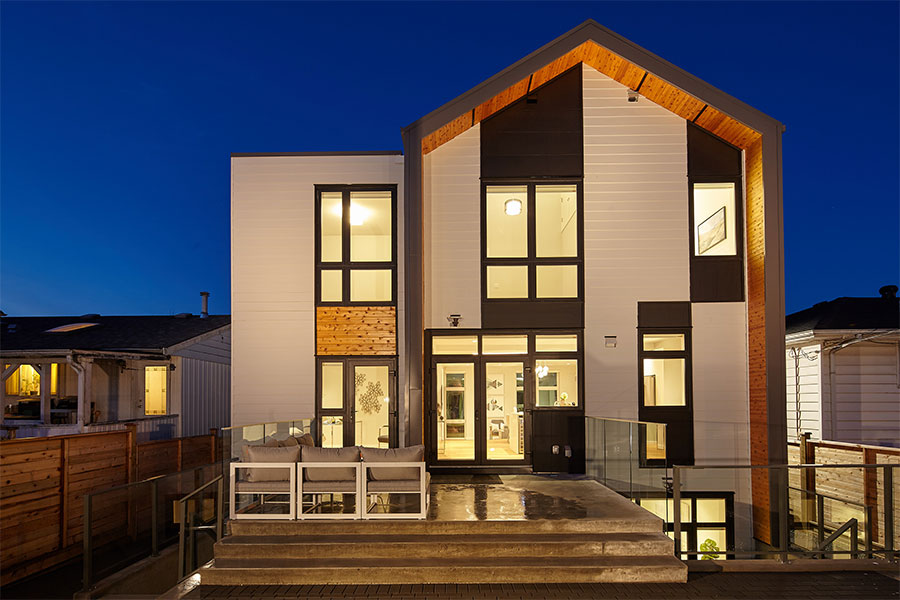Remodeling your home is an exciting venture, a chance to transform your space into something that reflects your style and needs. But with this excitement comes the potential for mistakes that could cost time, money, and peace of mind.
As per Sheiner Construction in their post for 10 House Remodel Mistakes: “Remodeling an entire house is a significant decision, especially in a vibrant city like San Diego. The allure of upgrading your living space into a dream home can be thrilling. However, the process is fraught with potential pitfalls that can turn this exciting project into a nightmare, right? From budgeting blunders to contractor mishaps, the steps to a beautifully remodeled home are lined with challenges. Understanding these mistakes can help you navigate the complexities of a full house remodel, ensuring a smoother, more successful renovation experience.”
1. 8 House Remodeling Mistakes
Homeowners often make common errors like rushing the planning process, underestimating costs, or skipping permits, which can lead to major setbacks. This guide dives into the top eight house remodeling mistakes and how to avoid them. By steering clear of these, you can ensure that your renovation goes smoothly, and the results meet your expectations without unnecessary stress.
Why Proper Planning is Key to a Successful Remodel
The importance of planning can’t be overstated in a remodeling project. Whether you’re redoing a kitchen, bathroom, or an entire home, thorough planning sets the foundation for success. You’ll want to start by outlining exactly what you want from the remodel and how each change fits into your overall vision for the space. Poor planning often leads to oversights in design, mismatched materials, or an inefficient use of space. Taking time upfront to map out everything will save you time, money, and a lot of headaches later on.
Impact of Poor Budgeting on Remodeling Projects
When you fail to budget properly, you’re setting yourself up for costly mistakes. Many homeowners get swept up in the excitement of new countertops or flooring and overlook the smaller but essential costs that can quickly add up. A lack of budgeting could mean having to compromise on quality or halt the project halfway due to depleted funds. Always ensure that your budget includes a buffer for unexpected expenses, which inevitably arise during most renovations.
2. Skipping the Planning Phase
One of the biggest mistakes homeowners make when remodeling is skipping the planning phase altogether. It’s easy to dive into a project with just a rough idea of what you want, but this lack of preparation can lead to numerous problems. Failing to plan often results in poor design choices, overlooked details, or unfinished projects. It also makes it hard to anticipate potential problems that might pop up during construction, such as needing additional plumbing or dealing with structural issues.
The Importance of Detailed Blueprints and Designs
A detailed blueprint or design plan is crucial for any remodeling project, regardless of size. This document serves as a roadmap for contractors and helps ensure that everyone involved knows the exact scope of the work. It includes specific measurements, material selections, and how each area of the home will look and function. Without a clear design plan, you could end up with a layout that doesn’t make the most of the space or materials that don’t align with your vision.
Common Areas Where Homeowners Forget to Plan
Even when a plan is in place, some areas are often overlooked. For example, storage solutions are frequently left as an afterthought, leading to cluttered spaces down the line. Another forgotten aspect is traffic flow—how people will move through and interact with the space. Not considering these factors early on can lead to functionality issues and dissatisfaction once the project is complete.
3. Underestimating the Budget
A common remodeling mistake is underestimating the budget. Many people start with a figure in mind but fail to consider the inevitable unexpected costs that come with any renovation. From hidden water damage behind walls to outdated wiring that needs replacing, these surprise expenses can throw off even the best-laid plans. Failing to leave room in your budget for these surprises can lead to cutting corners or stopping the project altogether.
Hidden Costs That Often Get Overlooked
When setting your remodeling budget, it’s important to factor in costs that aren’t immediately apparent. This might include fees for permits, extra labor for dealing with unforeseen complications, or even the cost of eating out if your kitchen is out of commission. Additionally, many people forget to budget for finishes like hardware, lighting fixtures, or small decorative elements that can really add up in the end.
How to Build Flexibility Into Your Remodeling Budget
One of the best ways to avoid financial strain is to build flexibility into your budget. Set aside at least 10-20% of the total budget for unexpected costs, whether that’s extra materials, additional labor, or a change in design midway through the project. Having a buffer allows you to handle surprises without sacrificing quality or delaying the project.
4. Neglecting Permits and Legal Requirements
Skipping permits or ignoring legal requirements is a mistake that can bring your entire remodeling project to a screeching halt. Whether you’re expanding your home, making structural changes, or upgrading electrical or plumbing systems, most major renovations require permits. Homeowners often think that skipping this step will save time and money, but in reality, it can lead to significant fines, forced reversals of work, or issues when trying to sell the home in the future.
Why Permits are Critical for Structural Changes
Permits exist to ensure that any major work is completed safely and according to local building codes. They’re especially important when it comes to structural changes, as these modifications can affect the integrity of the home. Failing to get the necessary permits for things like removing a load-bearing wall or expanding the footprint of the house can not only put the safety of the occupants at risk but also reduce your home’s value.
Consequences of Skipping the Permit Process
The consequences of not getting permits can be severe. If an inspector discovers unpermitted work, you could be fined and required to undo the work, which adds even more costs to the project. Worse, selling the house could become complicated if buyers or their agents discover that work wasn’t completed to code, making it harder to close a sale or reducing the price you can ask.
5. Choosing the Wrong Contractors
Selecting the right contractor can make or break your remodeling project. Many homeowners fall into the trap of choosing the cheapest option without considering the contractor’s qualifications or experience. This can result in poor workmanship, delays, or even the need to redo entire sections of the project. Vetting your contractor properly is essential to avoid these headaches.
What to Look for When Hiring a Contractor
When hiring a contractor, you want to make sure they are licensed, insured, and have a solid track record of successful projects. Ask for references from previous clients and look at reviews online to gauge their reliability and skill level. Don’t be afraid to ask questions about their process, timelines, and whether they’ve completed similar projects to yours in the past.
Red Flags That Signal an Untrustworthy Contractor
Some red flags to watch for include contractors who ask for a large percentage of the payment upfront, lack a detailed contract, or avoid answering specific questions about their experience. Contractors who pressure you into quick decisions or don’t provide itemized estimates should also be approached with caution, as these could signal potential problems down the line.
6. Ignoring Lighting and Ventilation
Lighting and ventilation are two critical elements of a remodel that are often overlooked but can dramatically affect the final outcome. Proper lighting can make a space feel larger, brighter, and more welcoming, while good ventilation is essential for keeping air fresh and reducing moisture buildup, especially in kitchens and bathrooms.
How to Plan for Natural and Artificial Lighting
When remodeling, it’s important to consider both natural and artificial lighting. Maximizing natural light can make a room feel more open and airy, while well-placed artificial lighting can highlight key areas or create ambiance. Think about the placement of windows, skylights, and light fixtures early in the design process to ensure every corner of the space is well-lit.
The Role of Ventilation in Home Remodeling
Ventilation is crucial, particularly in areas prone to moisture, like kitchens and bathrooms. Poor ventilation can lead to mold growth, musty smells, and overall discomfort. Installing adequate ventilation systems, such as exhaust fans and air vents, ensures that air can circulate freely, keeping the environment healthy and the air fresh.
7. Over-personalizing the Design
It’s tempting to design every aspect of your home remodel to your personal taste, but over-personalizing can be a costly mistake if you ever plan to sell the house. Highly personalized features might appeal to you, but they could limit the pool of potential buyers or reduce your home’s market value. Keeping some design choices neutral will give the home wider appeal and increase its resale value.
Finding a Balance Between Personalization and Market Appeal
While it’s important for your home to reflect your personality, it’s wise to strike a balance. Choose neutral finishes for key elements like flooring, cabinetry, and paint colors, which can appeal to a broader audience. You can still personalize the space with accents, such as artwork or furniture, but make sure the bones of the home have timeless appeal.
Why Neutral Design Choices Age Better
Trendy or bold design choices can quickly feel dated, making your home harder to sell down the line. By opting for neutral, timeless materials and finishes, you create a space that will age well and retain its value. Neutral designs also give future homeowners more freedom to personalize the space in their own way, which can make your home more attractive on the market.
8. Conclusion
Remodeling your home is a big undertaking, but avoiding common mistakes can make the process much smoother and more rewarding. From skipping proper planning and budgeting to neglecting lighting, ventilation, or permits, these missteps can turn a dream renovation into a nightmare. However, by taking the time to plan, setting a realistic budget, and hiring qualified professionals, you can avoid these headaches and create a space you’ll love for years to come. The key is to stay flexible, anticipate unexpected challenges, and keep the end goal in mind.





